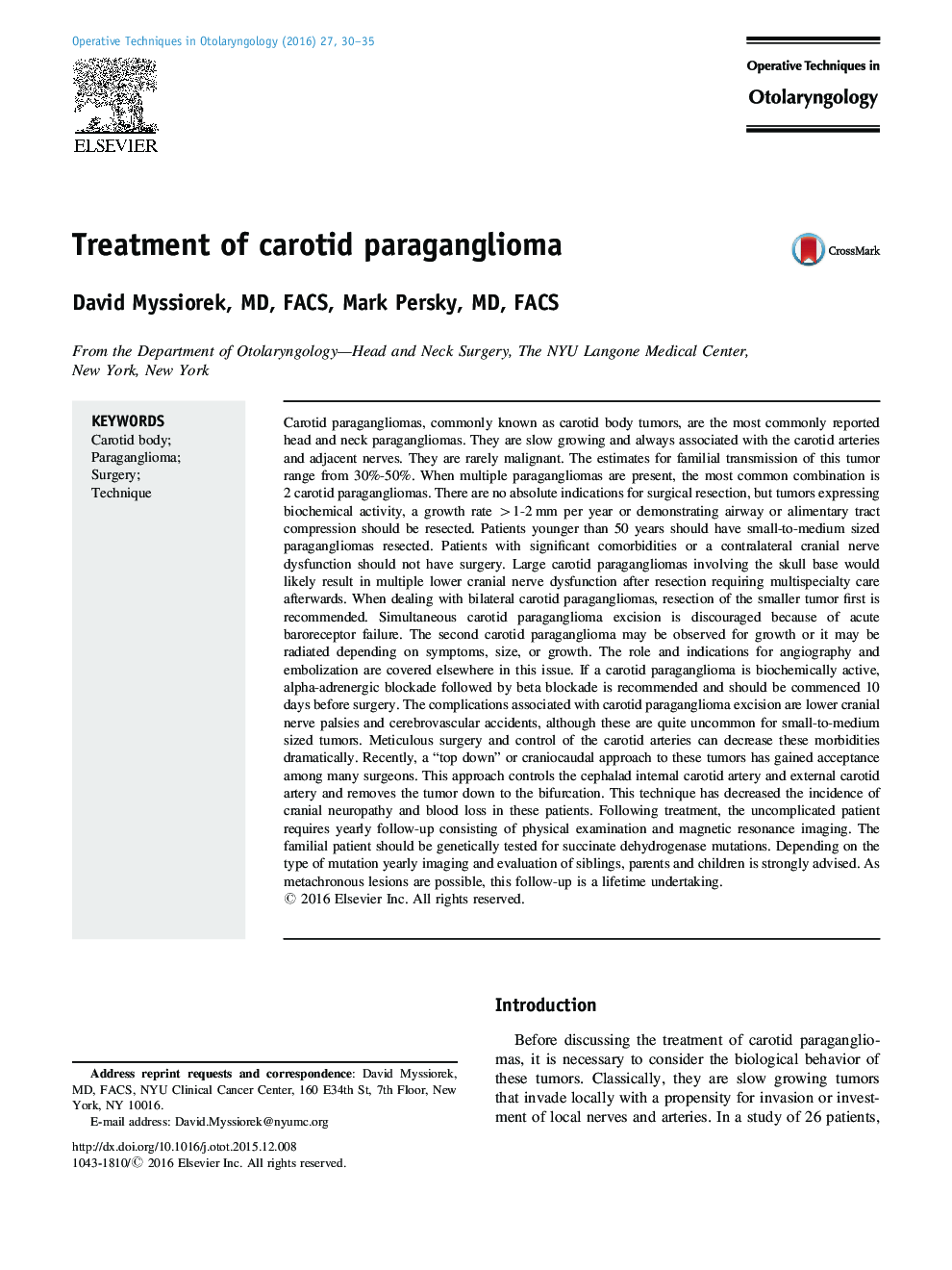| کد مقاله | کد نشریه | سال انتشار | مقاله انگلیسی | نسخه تمام متن |
|---|---|---|---|---|
| 4122553 | 1270428 | 2016 | 6 صفحه PDF | دانلود رایگان |
Carotid paragangliomas, commonly known as carotid body tumors, are the most commonly reported head and neck paragangliomas. They are slow growing and always associated with the carotid arteries and adjacent nerves. They are rarely malignant. The estimates for familial transmission of this tumor range from 30%-50%. When multiple paragangliomas are present, the most common combination is 2 carotid paragangliomas. There are no absolute indications for surgical resection, but tumors expressing biochemical activity, a growth rate >1-2 mm per year or demonstrating airway or alimentary tract compression should be resected. Patients younger than 50 years should have small-to-medium sized paragangliomas resected. Patients with significant comorbidities or a contralateral cranial nerve dysfunction should not have surgery. Large carotid paragangliomas involving the skull base would likely result in multiple lower cranial nerve dysfunction after resection requiring multispecialty care afterwards. When dealing with bilateral carotid paragangliomas, resection of the smaller tumor first is recommended. Simultaneous carotid paraganglioma excision is discouraged because of acute baroreceptor failure. The second carotid paraganglioma may be observed for growth or it may be radiated depending on symptoms, size, or growth. The role and indications for angiography and embolization are covered elsewhere in this issue. If a carotid paraganglioma is biochemically active, alpha-adrenergic blockade followed by beta blockade is recommended and should be commenced 10 days before surgery. The complications associated with carotid paraganglioma excision are lower cranial nerve palsies and cerebrovascular accidents, although these are quite uncommon for small-to-medium sized tumors. Meticulous surgery and control of the carotid arteries can decrease these morbidities dramatically. Recently, a “top down” or craniocaudal approach to these tumors has gained acceptance among many surgeons. This approach controls the cephalad internal carotid artery and external carotid artery and removes the tumor down to the bifurcation. This technique has decreased the incidence of cranial neuropathy and blood loss in these patients. Following treatment, the uncomplicated patient requires yearly follow-up consisting of physical examination and magnetic resonance imaging. The familial patient should be genetically tested for succinate dehydrogenase mutations. Depending on the type of mutation yearly imaging and evaluation of siblings, parents and children is strongly advised. As metachronous lesions are possible, this follow-up is a lifetime undertaking.
Journal: Operative Techniques in Otolaryngology-Head and Neck Surgery - Volume 27, Issue 1, March 2016, Pages 30–35
